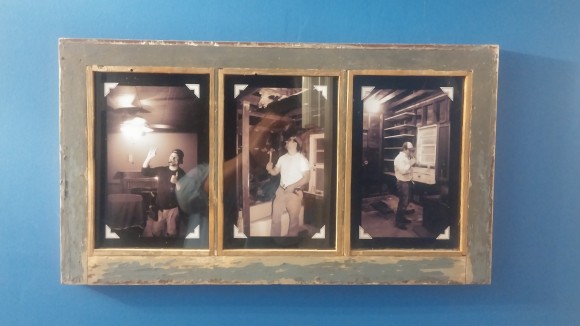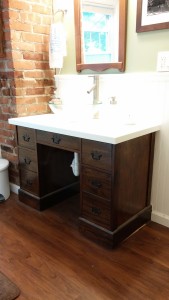Architecture of “Repurposement”
June 22nd, 2018
Architecture is change: change in style, change in materiality, change happening constantly and never stopping. We are increasingly seeing our designs needing to be more flexible, more open to repurposing either spatially or materially, with faster turnarounds and tighter budgets. Such obstacles can be seen as restrictions or constraints, but why do they need to be? Architects can easily imagine reusing a worn parquet floor from an old racquet ball court as a beautiful feature wall, or see a dilapidated arms manufacturing facility from WWII being transformed into a super clean and modern office space.
So what gets in the way of those types of transformations and “repurposements” happening more frequently? Budget? Schedule? Two critical items that cannot be ignored, of course – but sometimes if we look at the big picture just a little bit more or a little bit longer before making up our minds, then it might make focusing on these two things as the most pivotal elements right from the start seems so shortsighted.
For example, take that parquet floor that could get turned into a feature wall. A lot of the times we have experienced the cost of saving something for re-purposing being just marginally more than putting it down (or up) with new material, but we don’t do it – why? The first thing that seems to come into play at the possibility of reuse is the initial dollar cost associated with pulling up that parquet floor and putting it to a new use that it wasn’t originally intended for. But isn’t that initial dollar figure just one part of the life cycle cost of not reusing that floor?
If only we consider the other costs of throwing things into the landfill as quickly and as easily as we acknowledge the initial dollars spent trying to save them. The history of the element is thrown away without considering what possible impacts it could have on the new space. Just because that racquet ball court became a doctor’s office doesn’t mean it cannot echo the use of the previous space on some level. Old breweries turned into condos seem to relish the elements of the previous use: old tired beams, worn floors, etc. Those items are not covered up or removed, but rather coveted and celebrated, paying homage to the previous life of the space.
And what about the other “costs” of throwing potential reusable material into landfills? Doesn’t that have a cost far greater than a few man hours of removing nails, cleaning those wood floor planks, and attaching them to the new wall? What about the costs of transporting materials in diesel trucks, processing them in waste treatment plants, and then the potential impact they can have dumping them into the earth? Dramatic sure, but faced with that reality one may consider “repurposement” over disposal.
So why does it seem that Architects do this more than anyone else? Are they better at it because of creativity, training, or some other intangible reason? The fact is that they don’t do this more than anyone else, and a lot of us who aren’t Architects already practice “repurposement” regularly and don’t even realize it: old milk jugs become colorful flower planters, rusted farming equipment is transformed into beautiful lawn art, and wooden pallets are used for hundreds of different things than originally intended.
That boulder charging down the hill started as a pebble, and it was already there. That old crusty window removed during a renovation can be remade into a frame full of memories, some broken glass turned into an intricate table top, and an old desk destined for the dump renovated into a beautiful bathroom vanity. The trick is to consider the value and cost regardless of the scale, and when you do that, a thousand square feet of old parquet floor seems pretty much in line with that weathered pallet you want to turn into a lovely wine rack. And when things are reused, repurposed, isn’t that not some form of progress?
And maybe, just maybe, someone will see another use for this blog post in some way or another, different than what was originally intended and the idea of “repurposement” will come full circle.















